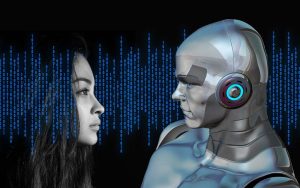As the life cycles of many products and services become shorter and shorter, thus placing increasing demands on the ability of organisations to be innovative.
Which is potentially easier to manage or control: technological capabilities or human resource capabilities, and why?
This is certainly a difficult question to answer.. Both technology and people are important for being creative. The best companies find a way to use technology and have a workplace that encourages new ideas and teamwork.
It is possible to increase technological capabilities by making investments in research and development as well as by putting new tools and systems into use (Dodgson et al., 2008). The largest tech firms, like Google, Amazon, Uber, Microsoft, and others, have the capacity to create ground-breaking products and transform whole markets (Mizroch, 2018). Tesla (2023) is a fantastic example of a company that uses technology to design and produce solar products, energy storage systems, and electric vehicles.
Investments in staff training and development, building a supportive organisational culture, and encouraging a strong sense of teamwork and collaboration are all ways to strengthen human resource capabilities (Dodgson et al., 2008). In order to foster a supportive and effective work environment, Rabobank (2023), a Dutch cooperative bank, places a high priority on employee engagement and job satisfaction.
Both are a difficult subject that many businesses must address, but Accenture (2023) has come to the following conclusion: the “Total Enterprise Reinvention” which is a deliberate strategy that aims to increase the performance standard. This strategy is intended to handle the difficulties businesses have in a fast-shifting business environment, where technology is reshaping proven business models and customers’ expectations are continuously changing. It also takes into account how digital technologies might enhance corporate value and how they may affect a company’s operations.
The four key categories are:
1. Ambition and strategy: current position, performance standards, accountability.
2. Talent: leaders’ tech knowledge, change management, data measurement.
3. Digital Core: maturity, sustainability and value objectives, negative impacts.
4. Ongoing Transformation Initiatives: cross-functional changes, partnership strategy, talent fit.
Therefore Technological capabilities can be easier to manage in the sense that they are static and hard-skilled. However, the impact of technology is not only limited to its technical features, but also influenced by the broader context such as social, political, and economic factors. Looking at the human resource capability which is tricky because people also have feelings and underlying emotions that a leader might not be aware of. People, unlike tech, are not a product and are not always rational. People are exposed to many factors and it is so much harder to manage because it cannot be automated and requires soft skills (Lewis, 2021).
The “Automate-Informate” concept (Zuboff, 1985) acknowledges the statement that technology and human behaviour interact in shaping the impact of technology on individuals and society. It can change the way we act and think, and also the way society works. But it’s not just the technology that does this – it also depends on the rules and values that our community has and the money and power that people have. Technology is not just a simple tool, it’s a part of a bigger picture and people will be influenced by it.
What is your opinion? Which Factor is Key to an Organization’s Innovation Success – Technological or Human Resource Capabilities?
Best, Mariëtta
References
Accenture (2023) Total Enterprise Reinvention. Available from: https://www.accenture.com/lv-en/insights/consulting/total-enterprise-reinvention [Accessed 4 February 2023].
Dodgson, M., Gann, D. & Salter, A. (2008) The Management of Technological Innovation: Strategy and Practice. Oxford: OUP Oxford. Available via the Vitalsource Bookshelf. [Accessed 4 February 2023].
Komm, A., Pollner, F., Schaniger, B. and Sikka, S. (2021) The new possible: How HR can help build the organization of the future. Available from: https://www.mckinsey.com/capabilities/people-and-organizational-performance/our-insights/the-new-possible-how-hr-can-help-build-the-organization-of-the-future [Accessed 4 February 2023].
Lewis, A. (2021) 5 Key Human Skills to Thrive in the Future Digital Workplace. Available from: https://www.harvardbusiness.org/5-key-human-skills-to-thrive-in-the-future-digital-workplace/ [Accessed 4 February 2023].
Mizroch, A. (2018) What The World’s Top 10 Tech Firms Have In Common. Available from: https://www.forbes.com/sites/startupnationcentral/2018/02/20/what-the-worlds-top-10-tech-firms-have-in-common/?sh=3f9229ec2b3a [Accessed 4 February 2023].
Rabobank (2023) About us. Available from: https://www.rabobank.com/about-us/in-short [Accessed 4 February 2023].
Tesla (2023) About us. Available from: https://www.tesla.com/about [Accessed 4 February 2023].
Zuboff, S. (1985) Automate/Informate: The Two Faces of Intelligent Technology Available via the University of Essex library [Accessed 4 February 2023].




